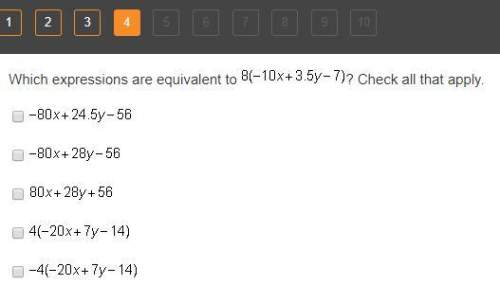Carl is trying to determine the length of segment MN using the Pythagorean theorem.
On a...

Mathematics, 22.05.2020 20:01 phillipfruge3
Carl is trying to determine the length of segment MN using the Pythagorean theorem.
On a coordinate plane, line M N has points (negative 3, 1) and (4, negative 4).
Step 1: Find the vertex of a possible right triangle. V(4, 1)
Step 2: Find the leg lengths of the right triangle. NV = 7, MV = 5
Step 3: Substitute the values into the Pythagorean theorem. 7 squared + 5 squared = c squared
Step 4: Solve for c. 7 squared + 5 squared = c squared. 49 + 25 = c squared. 74 = c squared. StartRoot 74 EndRoot = c.
Which best describes the accuracy of Carl’s solution?
Carl’s work and answer are both entirely correct.
Carl’s answer is correct, but he incorrectly labeled the leg lengths in step 2.
Carl’s work and answer are incorrect. He choose a vertex, V, that does not make a right triangle with MN.
Carl’s work and answer are incorrect. He substituted and solved incorrectly.

Answers: 3
Another question on Mathematics

Mathematics, 21.06.2019 15:00
Use the graph to determine the range. which notations accurately represent the range? check all that apply. (–∞, 2) u (2, ∞) (–∞, –2) u (–2, ∞) {y|y ∈ r, y ≠ –2} {y|y ∈ r, y ≠ 2} y < 2 or y > 2 y < –2 or y > –2
Answers: 1

Mathematics, 21.06.2019 17:30
X-intercept=-5 y-intercept=2 the equation of the line is
Answers: 2

Mathematics, 21.06.2019 20:30
The interior angles formed by the side of a hexagon have measures of them up to 720° what is the measure of angle a
Answers: 2

Mathematics, 21.06.2019 21:40
Write the contrapositive of the conditional statement. determine whether the contrapositive is true or false. if it is false, find a counterexample. a converse statement is formed by exchanging the hypothesis and conclusion of the conditional. a) a non-converse statement is not formed by exchanging the hypothesis and conclusion of the conditional. true b) a statement not formed by exchanging the hypothesis and conclusion of the conditional is a converse statement. false; an inverse statement is not formed by exchanging the hypothesis and conclusion of the conditional. c) a non-converse statement is formed by exchanging the hypothesis and conclusion of the conditional. false; an inverse statement is formed by negating both the hypothesis and conclusion of the conditional. d) a statement not formed by exchanging the hypothesis and conclusion of the conditional is not a converse statement. true
Answers: 1
You know the right answer?
Questions




Mathematics, 14.11.2019 12:31

Mathematics, 14.11.2019 12:31



Mathematics, 14.11.2019 12:31


Mathematics, 14.11.2019 12:31



World Languages, 14.11.2019 12:31

Mathematics, 14.11.2019 12:31

Advanced Placement (AP), 14.11.2019 12:31

History, 14.11.2019 12:31

Mathematics, 14.11.2019 12:31


Computers and Technology, 14.11.2019 12:31

Mathematics, 14.11.2019 12:31




